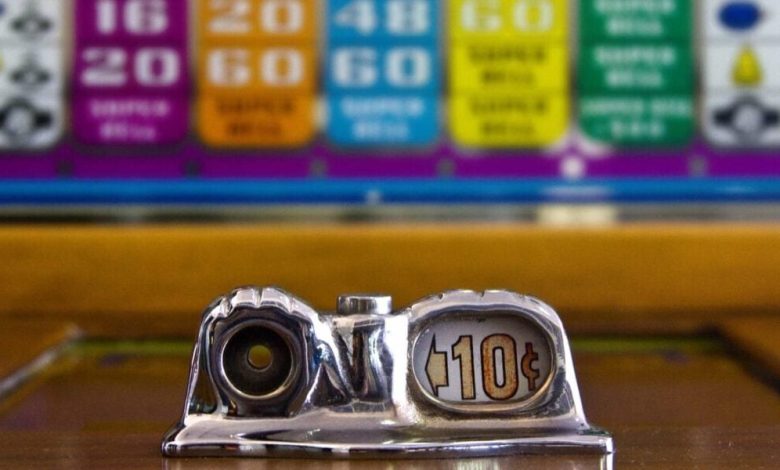The History of Slot Machines From the Liberty Bell to Digital Slots

Slot machines have undergone a remarkable transformation over the years, evolving from simple mechanical devices into the sophisticated digital machines that are a staple of modern-day casinos. The story of slot machines begins in 1895 with Charles Fey, a German immigrant who created the first mechanical slot machine, known as the Liberty Bell. Fey’s design featured three reels with five symbols’ hearts, spades, diamonds, horseshoes, and the Liberty Bell. The machine’s payout system was simple- if a player got three Liberty Bells in a row, they would win 50 cents, an amount that was quite valuable at the time. The Liberty Bell was groundbreaking for several reasons. It was the first machine that did not require a human operator, making it more convenient and efficient. Fey’s machine quickly gained popularity, becoming the blueprint for the machines that would follow. It marked the birth of a new form of gambling, one that would eventually dominate casinos worldwide.
The Evolution of Mechanical Machines
Following the success of the Liberty Bell, slot machines started to evolve. Manufacturers began to make improvements to Fey’s design, including the addition of more complex payout systems and new symbols. The classic “fruit machines” of the 1920s and 1930s, for example, featured symbols such as cherries, lemons, and plums. These machines continued to use mechanical reels, but they became more diverse in terms of payouts and themes. During this period, slot machines were often found in bars, taverns, and other entertainment venues, where they were a popular form of entertainment. The machines dispensed small rewards, such as candy or gum, when players won, keeping them legal in areas where cash prizes were prohibited. Despite the simplicity of these machines, they were incredibly popular and laid the groundwork for the slot machine industry we know today.
The Introduction of Electromechanical Machines
In the 1960s, a new era for slot machines began with the introduction of electromechanical machines. These machines combined mechanical components with electronic systems, allowing for the development of more complex and exciting games. Players could now enjoy new features such as multiple paylines, flashing lights, and sounds that made the experience more engaging. These new slot machines also allowed for automatic payouts, eliminating the need for a coin hopper and making the process faster and more efficient. The ability to offer larger jackpots also contributed to the increasing popularity of these machines, as they began to attract a wider audience, including high rollers who were looking for bigger rewards. By the 1970s, these electromechanical slot machines were widespread in casinos, and their appeal continued to grow. The addition of new game mechanics, including bonus rounds and multipliers, made the gameplay more interactive, further enhancing the player’s experience.
The Digital Revolution Video Slots
The next major development in the history of slot machines came in the late 20th century with the advent of video slots. These machines, introduced in the 1970s and 1980s, replaced traditional mechanical reels with digital screens. Video slots provided an entirely new way of playing, offering features that were previously impossible with mechanical machines. For the first time, players could interact with games that had multiple paylines and bonus features. The digital format also allowed for greater flexibility in terms of themes, and soon slot machines were available with a wide variety of themes, from movies and TV shows to fantasy and adventure. The rise of video slots revolutionized the gambling industry and attracted a whole new generation of players who enjoyed the dynamic, interactive gameplay. In 1976, the first video slot machine was introduced by Fortune Coin Co., marking the beginning of a new era in casino gaming. By the 1990s, video slots had taken over casino floors, becoming the most popular type of machine worldwide.
The Online Slot Boom
The internet boom of the late 1990s brought about another revolution in the slot machine industry- the rise of online slots. Online casinos allowed players to access their favorite games from the comfort of their own homes. No longer did people need to visit a physical casino to enjoy slot games; they could play from anywhere with an internet connection. Online slot machines quickly became popular due to their accessibility and convenience. In addition to offering traditional video slots, online casinos introduced progressive jackpots, where a portion of each bet goes toward a growing prize pool. These jackpots could reach massive sums, sometimes reaching into the millions, attracting players from around the world. The introduction of online slot machines also led to the creation of mobile slots, which allowed players to enjoy their favorite games on smartphones and tablets. This further expanded the accessibility of slot machines, making it easier than ever for players to engage with their favorite games.
The Future of Slot Machines Virtual and Augmented Reality
Today, the future of slot machines looks even more exciting with the advent of virtual reality (VR) and augmented reality (AR) technologies. VR casinos are already being developed, offering an immersive gambling experience that allows players to interact with games in a fully 3D environment. With VR headsets, players can step into a virtual casino, spin the reels, and even chat with other players in real-time. AR technology is also being used to enhance the gaming experience. AR slot machines use real-world surroundings to create interactive environments, allowing players to experience the thrill of slot gaming in a more immersive way. As technology continues to evolve, the future of slot machines holds even more exciting possibilities.
In Summary
The history of slot machines is a story of continuous innovation, from the Liberty Bell to the digital and virtual machines of today. What began as a simple mechanical device has evolved into a global entertainment phenomenon, offering millions of players the chance to win big. As technology continues to advance, it’s clear that the evolution of slot machines is far from over, and we can expect even more exciting developments in the future.




